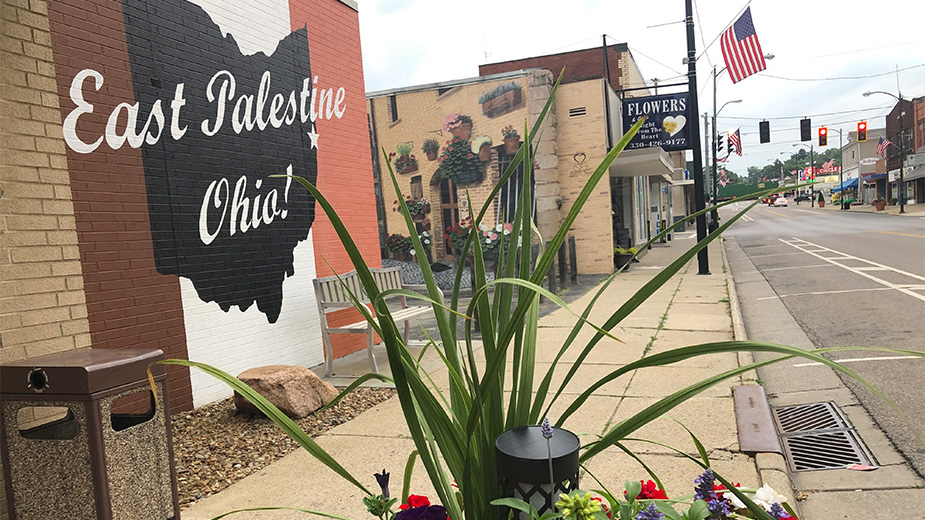Salem Manufacturers Find Strength in Numbers
SALEM, Ohio — Like the rest of the Mahoning Valley, industry played a key role in the development of Salem. It began with the railroads on the east side of the city, tucked just inside city limits. Being equidistant from Cleveland and Pittsburgh, Salem leaders saw the advantages to joining in with the big players in the region. Even smaller markets such as Akron are less than an hour away.
“The railroad, back when it was built, really brought that heavy industry to town, says Mayor John Berlin. “We still have many of those industries.” His city sits “right in the heart of this industrial area,” the mayor says, “and industry tends to locate wherever the roads all intersect.”
As industry declined in the Mahoning Valley in the late 1970s and early ’80s, Salem suffered. Manufacturers closed, jobs evaporated or left for other cities or overseas and the population dropped. Between 1970 and 1980 alone, the population of Salem fell 9.4%. It wasn’t until 2010 that Salem recorded an increase, however slight, in the number of residents.
Early in the new millennium, Salem suffered a second loss – the tool and die industry, which had treaded water in the wake of mill closings. Some shops suffered setbacks and many closed. But those that remained came out stronger.
“The loss of the auto tool and die industry caused a rapid downward pressure in this area in the early 2000s. We benefited from that because we were growing while they were shrinking,” says BOC Water Hydraulics Inc. owner Todd Olson. “A lot of our machinists today came from that world and they had great skills that we could use.”
Many of the heavy hitters in the industrial business are gone. A promotional video on the city website says 90 heavy industrial companies call Salem home and Berlin says most are small machine shops. What remains is the mindset and work ethic of a blue-collar town, one common throughout the Rust Belt.
“It’s in the heart of an industrial labor pool that was brought up in steel mills,” says Jock Buta, vice president of Butech Bliss. “We just happen to be smack dab in the middle of the land of technical engineering and skilled manufacturing.”
A few years ago, Valley manufacturers saw a threat: Young people interested in their line of work were leaving for the bigger cities, lured by the promise of jobs and, perhaps more important, larger paychecks. To stem the exodus, 19 companies – including Butech and BOC – formed the Mahoning Valley Manufacturers Coalition in 2011.
“We all share in the labor pool. We come through the downside of the baby boomers retiring and a slowdown in enrollment in trades programs,” Buta says. “So while we compete for labor, many of us joined up.”
The members work with vocational schools and community colleges to train workers in all aspects of industry and encourage them to stay in the Valley.
“It’s a great example of how similar businesses came together to get the talent in this area to understand that there’s good, high-paying jobs here in skilled trades,” Olson says.
Now with young workers staying in the region and ready to replace an aging workforce, things seem to be improving for Salem. The population grew for the first time since the 1970s, businesses seem happy with the state of things and income is growing.
“Jobs seem to be coming back to us,” the mayor says. “Our tax collections, at least as far as income tax reports, are more associated with more people having jobs and businesses turning profits.”
Olson says good business practices – efficiency, quality products and pushing into new markets – are what kept Salem’s surviving industrial companies going.
“I do believe the good will survive,” he says. “The businesses that are still standing have proven that that’s the way to operate.”
Two advocacy groups within the city, the Sustainable Opportunity Development Center and Salem Area Chamber of Commerce, can take some credit for the return of some industry. Buta also notes the city government has helped get the “metal-banging” plants back on track.
“The city offers a variety of tax incentives, from abatement to income tax refunds based on creating new jobs,” he says. “They stayed in communication and educated us on how to grow our workforce.”
The Sustainable Center has played a role in securing training grants for Salem companies, he adds, to train workers, helping them adapt to changes in the industry.
By banding together, the Salem manufacturers have created a new business environment built on personal relationships and understanding the challenges everyone faces.
“You can know everyone and get stuff done. You have trust in knowing that the people you work with share the same values and business motivations,” Olson says. “When you pick up the phone and talk to another manufacturer in the area, they understand the urgency, the need for support.”
The economic health of Salem is still very much fluid, Olson says, but the light at the end of the tunnel can be seen. There’s still a ways to go before anyone says things are perfect.
“We’ve seen the oil and gas pullback, which has caused a slowdown. But generally speaking it seems like dawn,” he says. “The future is bright, but to say it’s all roses and sunshine would be unrealistic. We have to continue to work hard if we all want to be standing 10 years down the road.”
Pictured: Todd Olson, owner of BOC Water Hydraulics, says that in Salem, “The good will survive.”
Copyright 2024 The Business Journal, Youngstown, Ohio.



